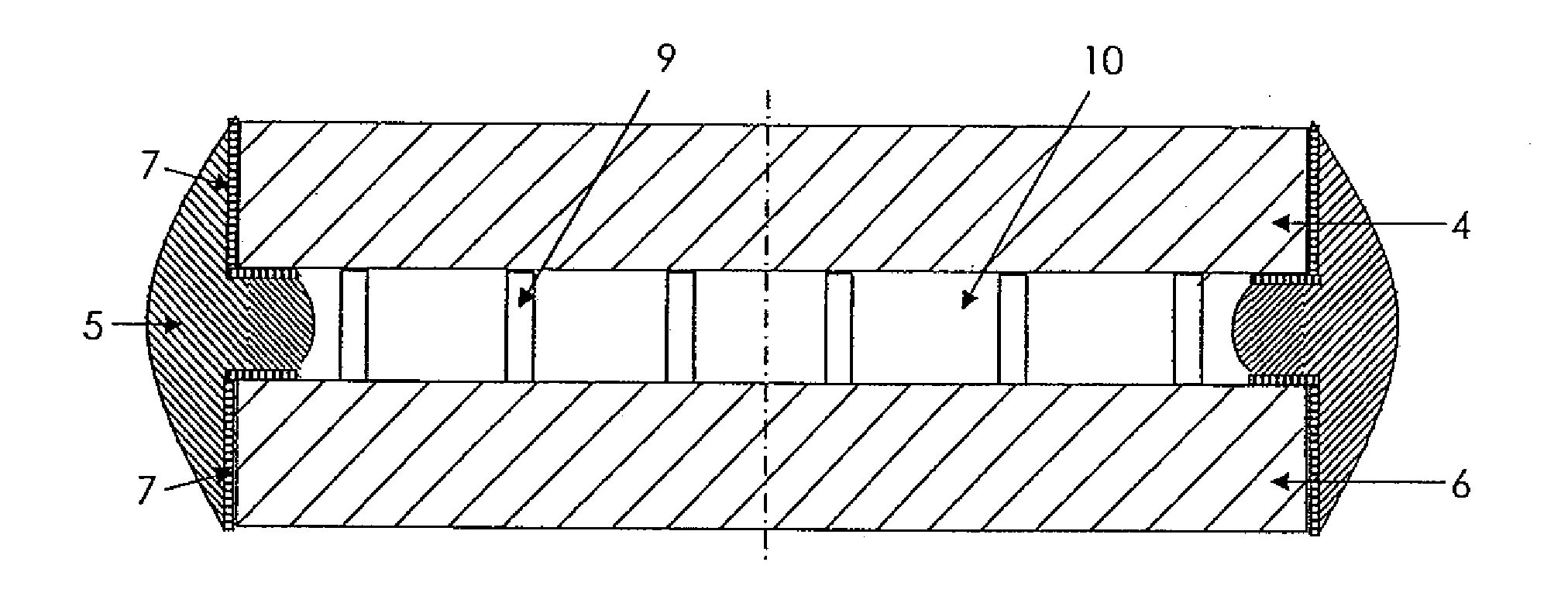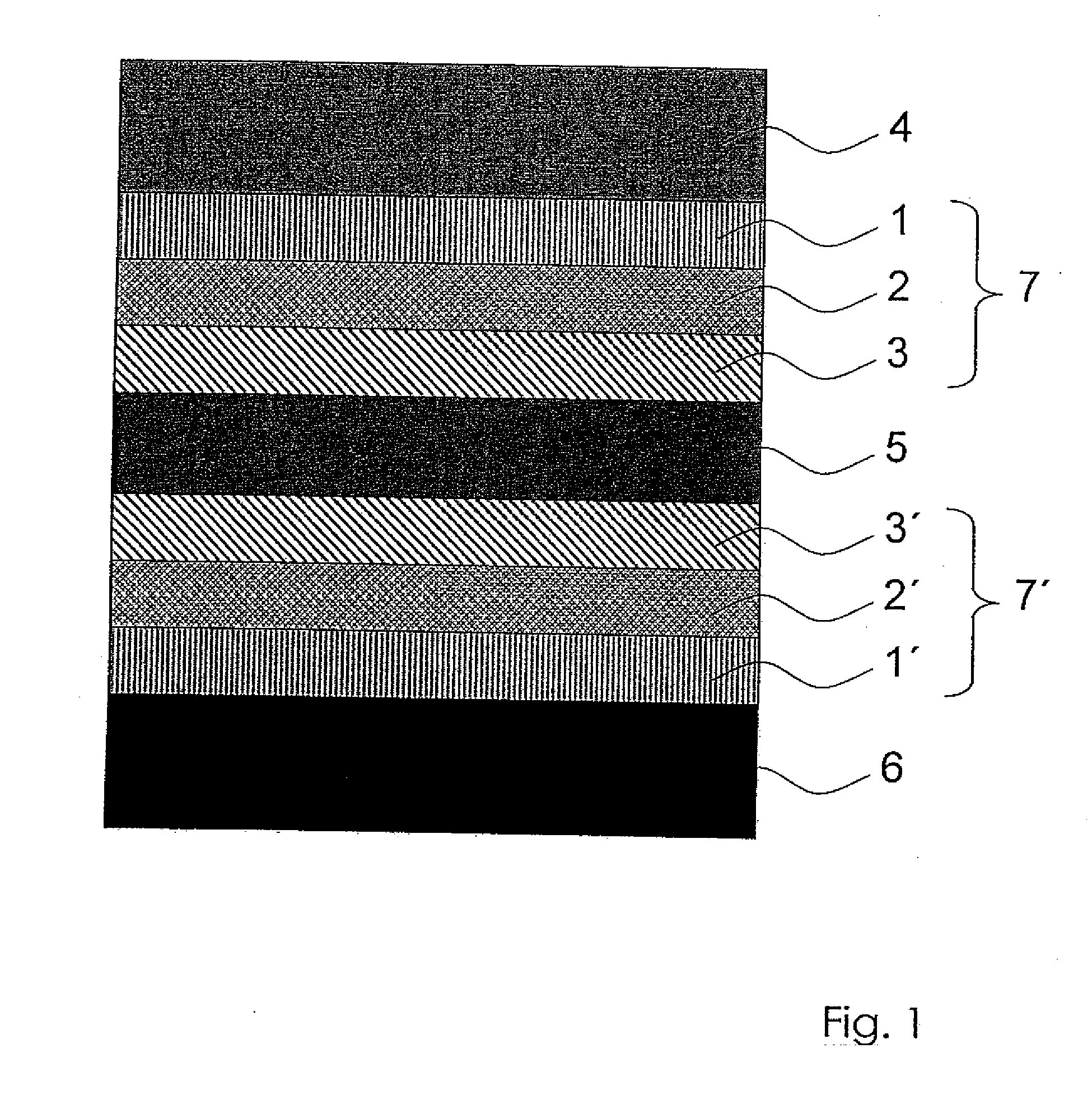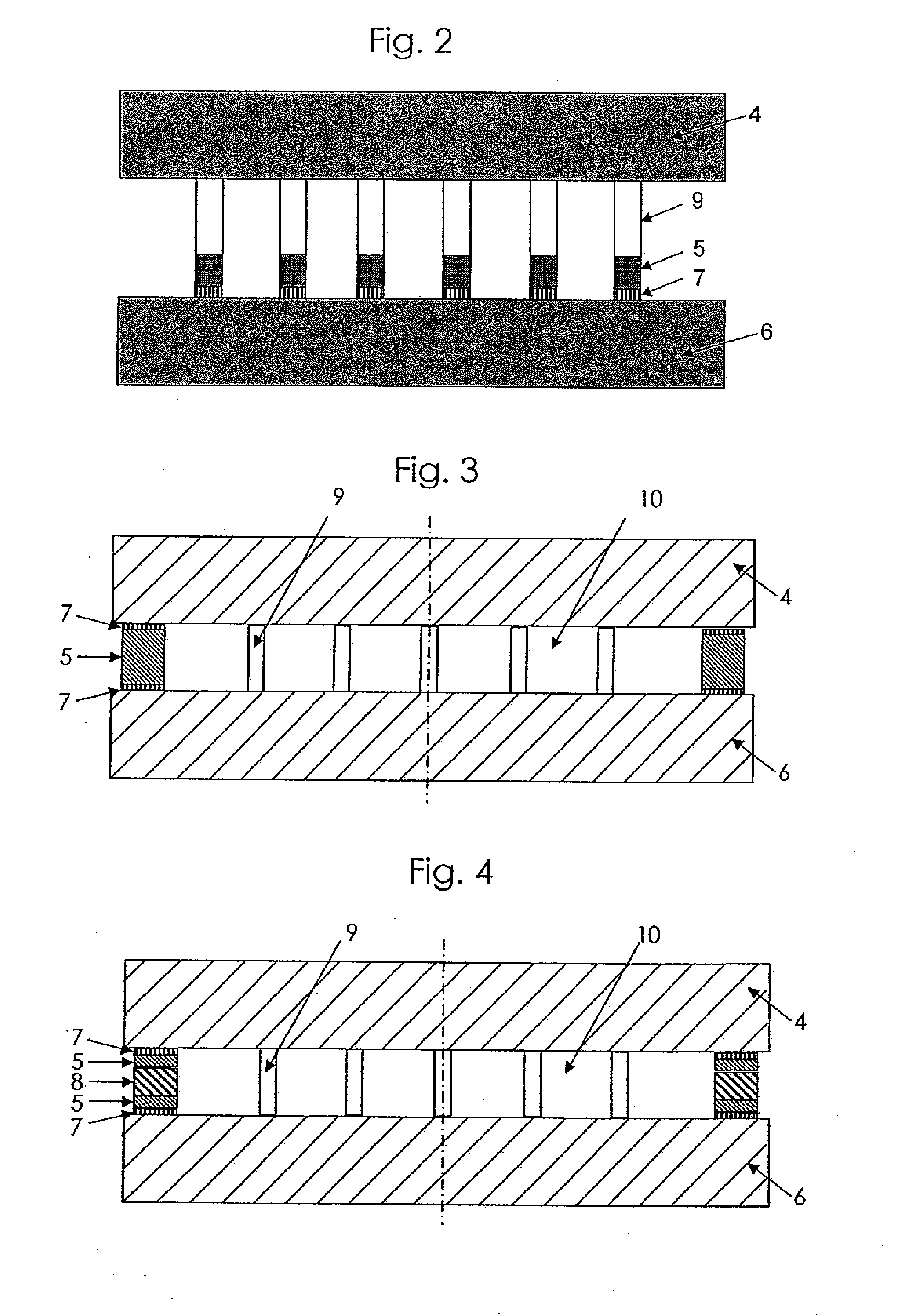Method for the permanent connection of two components by means of glass or metal solder
a technology of metal soldering and component, applied in the direction of welding/cutting media/materials, manufacturing tools, soldering media, etc., can solve the problems of high transient mechanical internal tension, high thermal expansion coefficient of metal layer and material to which the components are to be joined, and insufficient wetness of known solder materials on the surface of electrically nonconductive materials in particular, and achieve thermal conductivity of the layer system providing adhesion. , the effect of improving the adhesive ability
- Summary
- Abstract
- Description
- Claims
- Application Information
AI Technical Summary
Benefits of technology
Problems solved by technology
Method used
Image
Examples
Embodiment Construction
[0031]FIG. 1 shows the layer sequence of a soldered connection for the permanent connection of two components 4, 6, of which at least one component comprises an electrically nonconductive material, preferably a glass-like material, such as quartz glass or a ceramic. The soldered connection described hereafter is thus suitable for producing a permanent connection between a glass component and a metal component and between two glass components or similar electrically nonconductive components. Layer systems 7, 7′, each comprising three layers, which are composed of an adhesive layer 1, 1′, a solderable layer 2, 2′, and an oxidation protective layer 3, 3′ if a metal solder is used, are located on the surfaces of the components 4, 6 to be connected to one another. The adhesive layers 1, 1′, which comprise oxidic, carbidic, and / or nitridic components or mixed compounds thereof, are each selected in regard to their material selection so that they have the best possible wetting and / or adhes...
PUM
| Property | Measurement | Unit |
|---|---|---|
| thickness | aaaaa | aaaaa |
| temperatures | aaaaa | aaaaa |
| electrically nonconductive | aaaaa | aaaaa |
Abstract
Description
Claims
Application Information
 Login to View More
Login to View More - R&D
- Intellectual Property
- Life Sciences
- Materials
- Tech Scout
- Unparalleled Data Quality
- Higher Quality Content
- 60% Fewer Hallucinations
Browse by: Latest US Patents, China's latest patents, Technical Efficacy Thesaurus, Application Domain, Technology Topic, Popular Technical Reports.
© 2025 PatSnap. All rights reserved.Legal|Privacy policy|Modern Slavery Act Transparency Statement|Sitemap|About US| Contact US: help@patsnap.com



